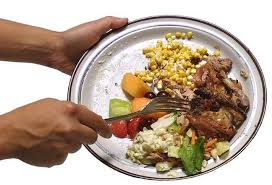Food for thought in climate change
USA – UTC Building & Industrial Systems have published a new book which connects the issues of hunger, resource conservation and climate change mitigation. The book states that if food waste were a country, it would be the third largest emitter of greenhouse gases behind only China and the United States but that the link between food waste and climate change is often overlooked.
Carrier, as a world leader in cold chain technologies, is in a unique position to comment on the global food system, witnessing at first hand as it does the stunning amount of food wasted globally. John Mandyck, chief sustainability officer, UTC Building & Industrial Systems, and Eric Schultz, former chairman and CEO of Sensitech, a United Technologies company specializing in cold chain monitoring and visibility, are the co-authors of a 182-page paperback book, called Food Foolish: The Hidden Connection Between Food Waste, Hunger and Climate Change, which has been published in an attempt to elevate global awareness of this issue and to call attention to the extraordinary social and environmental opportunities created by wasting less food.
“Hunger, food security, climate emissions and water shortages are anything but foolish topics,” declared Mandyck. “The way we systematically waste food in the face of these challenges, however, is one of humankind’s unintended but most foolish practices. We hope this book will be a catalyst for a much needed connected global dialogue on an issue that we believe is essential to the sustainability of the planet.”
One-third or more of the food produced each year is never eaten while at the same time more than 800 million people – a population equivalent to the United States and European Union combined – are categorised as being chronically hungry. Food waste also has a devastating environmental impact as it has been shown that the embodied carbon dioxide emissions in food waste alone represent 3.3 billion metric tons. This total is the equivalent of the energy which is used to produce food that’s never eaten, including the fuel consumed by tractors in both the planting and harvesting processes, electricity for water pumps in the field and the power for processing and packaging facilities. In addition to greenhouse gas emissions, the quantity of water which is used to grow the food we throw away is greater than the quantity of water used by any single nation on the planet.
“The very foods we need to address global nutrition and meet consumer demand are the most water-intensive and require the greatest protection along the supply chain,” stated Schultz. “Their loss and waste not only intensifies hunger, but destroys our freshwater resources.”
The impacts of food waste are further magnified by the world’s ever-increasing population with the global population expected to grow by another 2 billion people by the year 2050, with the added challenge of feeding more and more people.
“We already produce enough food to feed 10 billion people – everyone today and those expected by 2050,” added Mandyck. “We must implement readily available strategies to avoid food loss and extend food supplies – including energy efficient, sustainable and affordable technologies that better preserve food during transport and distribution, improved food safety standards and a change in consumer behavior. When we waste less, we feed more. Without action, the low-hanging fruit for reducing climate change will continue to literally rot before our eyes.”















